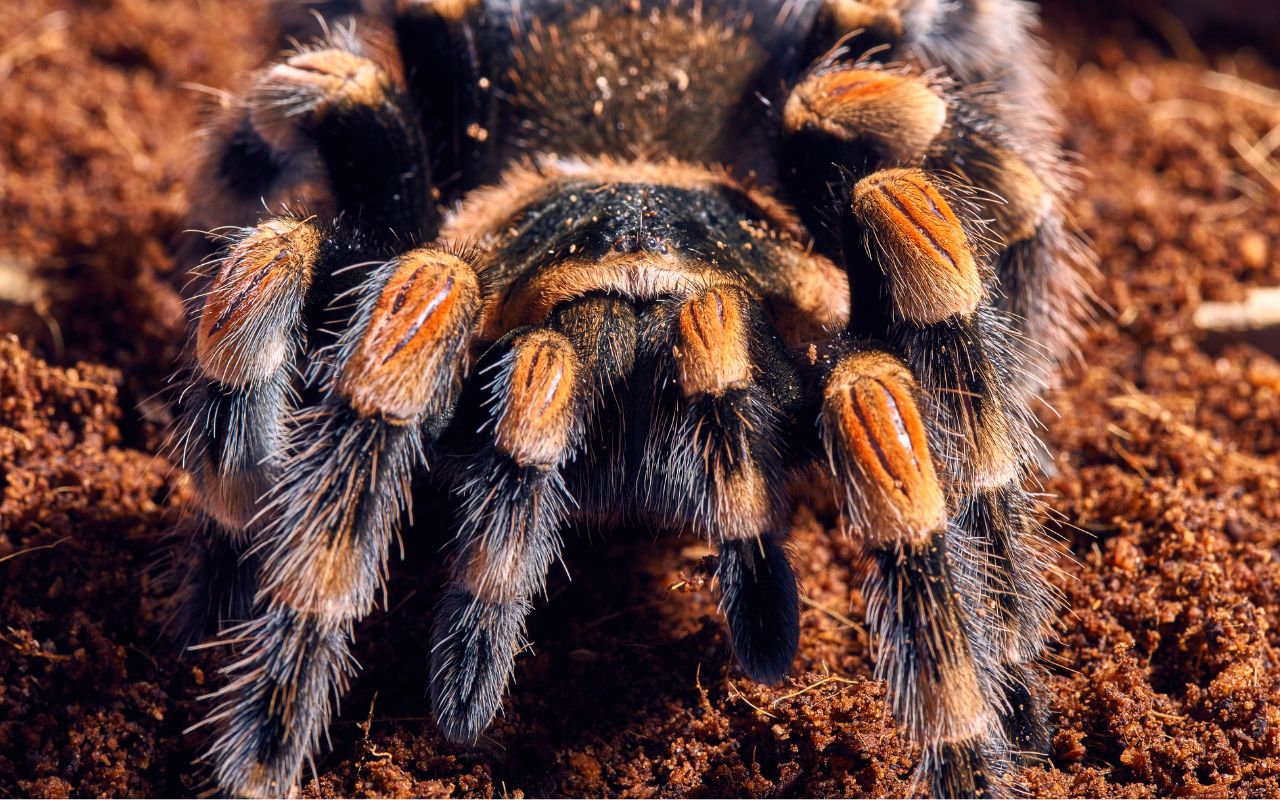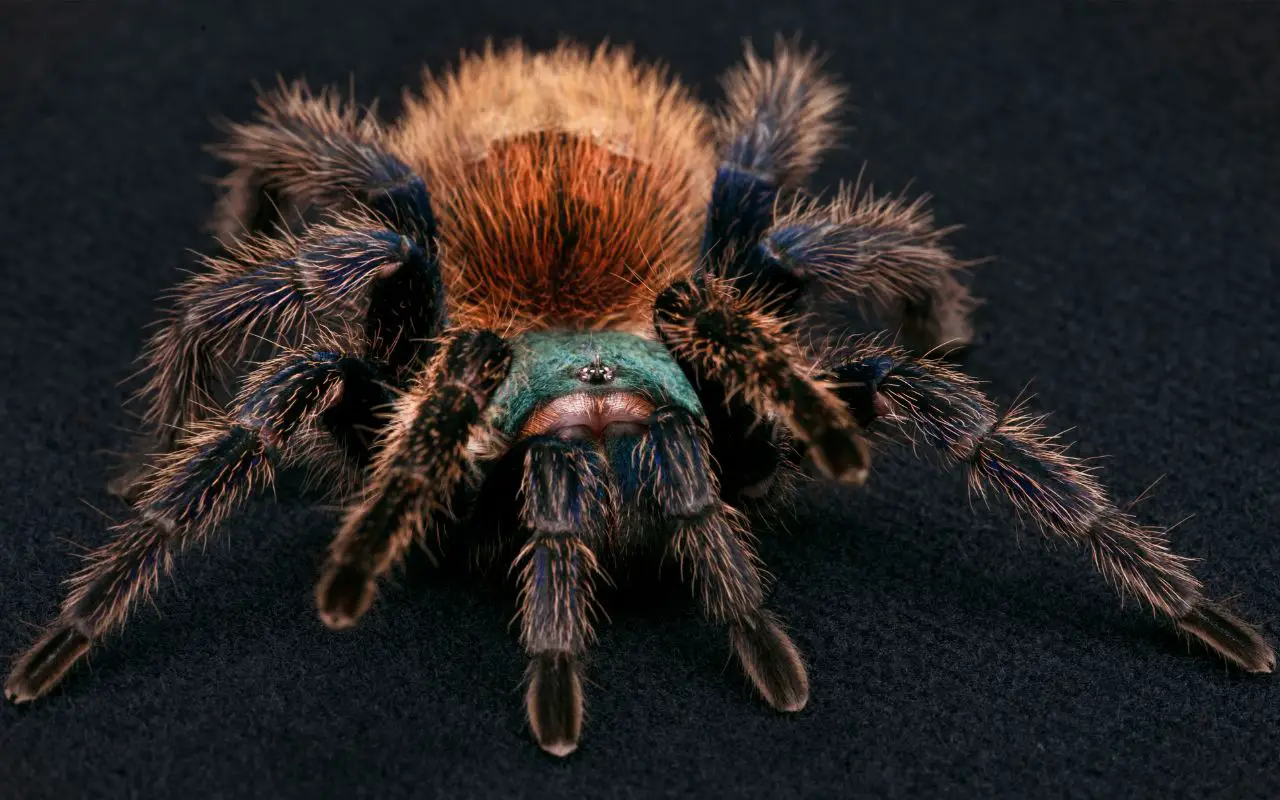Last updated on February 1st, 2023 at 10:07 am
Tarantulas vary hugely in temperament – some are docile, whereas others are moody. Keep reading reading to find out what tarantulas are good for handling…
If you’re a beginner tarantula keeper, you might want to start off with a docile species. This will make you feel safer, and get you used to keeping them before moving onto a more advanced species. The following are the most common species for handling. Make sure you choose the right one for you.
Before reading this article, please keep in mind a few things:
- all tarantulas can bite – but prefer not too
- New World tarantulas can also shed urticating hairs which irritate your eyes – it’s not just a bite you need to be cautious of
- tarantulas are delicate. Dropping them can kill them! Think of their safety too.
Mexican Red Knee
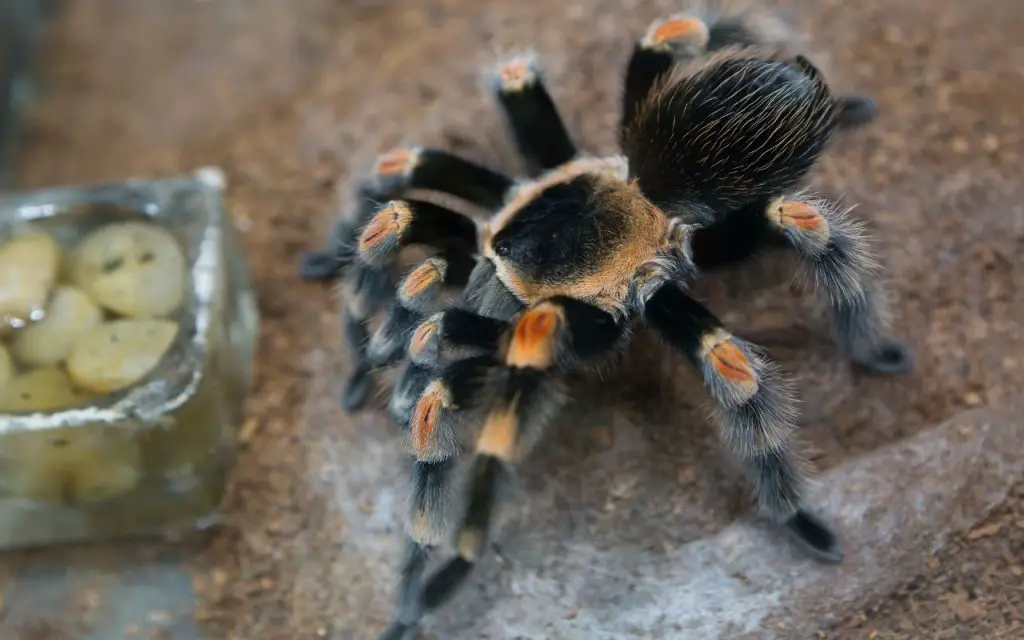
The Mexican red knee tarantula is a fairly easy pet to care for, and it can be handled gently and safely. It’s not social and doesn’t need socialization, but they don’t seem to mind it.
The Mexican Red Knee Tarantula is very placid and long-lived. On top of its long lifespan, the species is not very temperamental and generally only bites if genuinely threatened. As a Mexican red knee tarantula is not dangerous to handle, it may be an excellent choice for someone who is not accustomed to handling spiders.
When choosing a suitable habitat for your tarantula, make sure you find a place that’s moist and free of debris. A medium-sized tank with plenty of substrate is ideal for a Mexican Red Knee. It should be at least five gallons and have a width three times longer than its diagonal leg span. A good hiding place should be large enough to accommodate the tarantula, and if possible, you can provide several hides for it to use.
You should be sure to sit on the floor while handling your tarantula. Accidental drops from a few feet away can cause serious injury to your pet. You can find a full husbandry guide here.
Brazilian Black
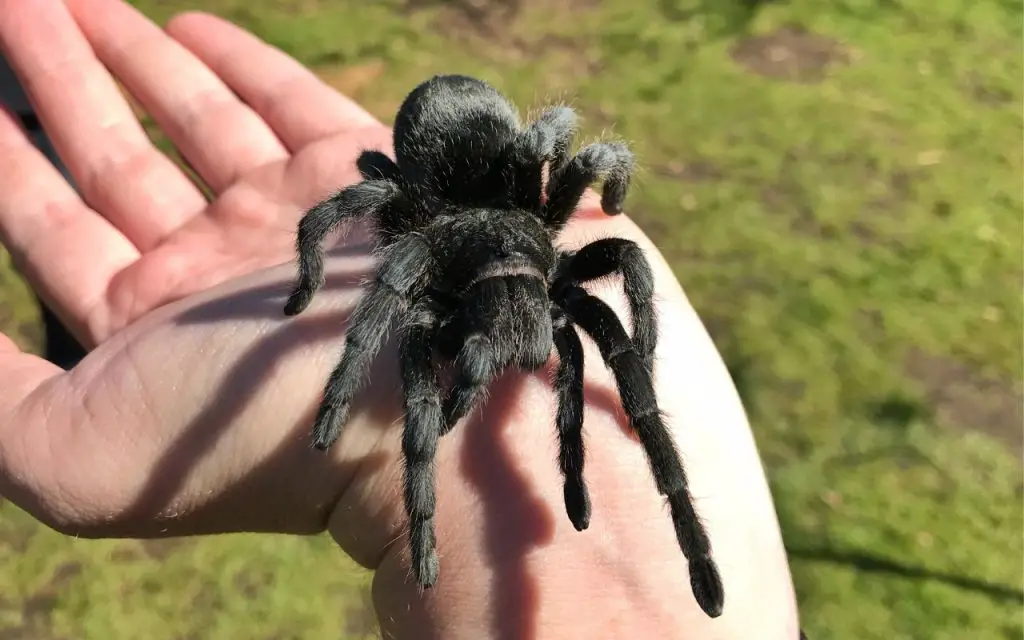
The Brazilian Black tarantula is a slow-growing species. It is excessively docile, and probably the best tarantula for handling. It does not like excessive heat or humidity, so it is best to maintain a temperature gradient between warm and cool. In the wild, this tarantula can survive in room temperature, but you can use a heating pad if necessary (if your house gets very, very cold). It does not need a lot of food, so feedings should not exceed twice a week.
A Brazilian black tarantula is not aggressive. It is often calm and easy to handle, and it rarely flicks its urticating hairs off its rump. However, it is still capable of doing so if startled. Just be sure to supervise the behavior of your pet to prevent any potential problems.
You should make sure to keep the habitat clean. Remove any uneaten food and molt from your tarantula’s habitat. It also needs constant access to water, which means that you need to put a shallow water dish near the habitat. Follow the link for a full husbandry guide.
Chilean Rose
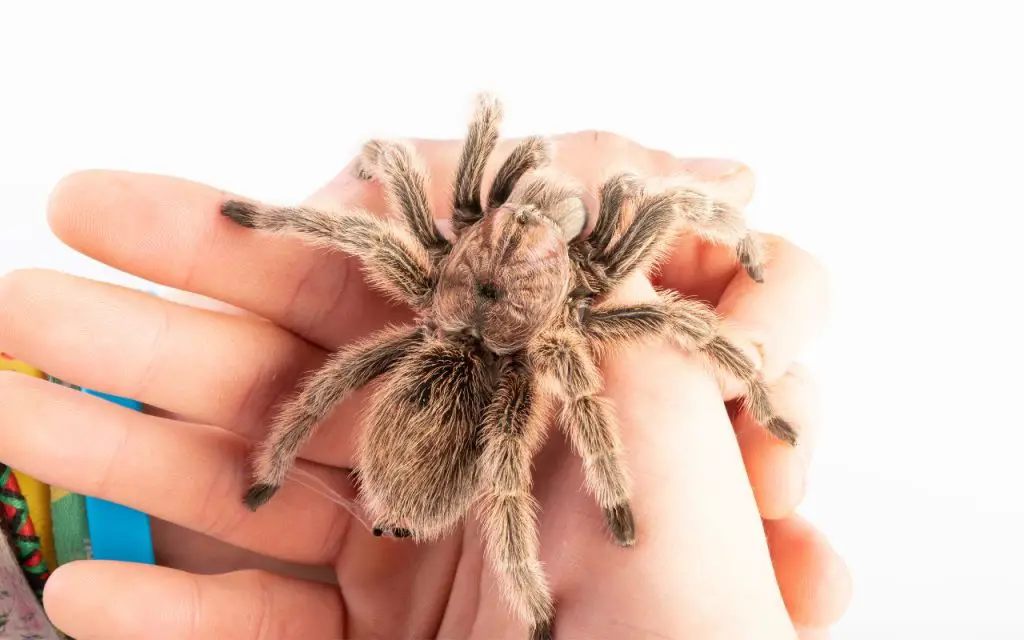
While a variety of pet stores sell Chilean rose tarantulas, it is recommended that you buy a live animal from a reputable breeder or rescue organization. A reputable seller will be able to provide you with more information about the history of the animal. On average, a Chilean rose hair tarantula will cost between $20 and $60, but prices will vary widely.
Although tarantulas are not deadly, they are venomous. Their bites usually result in an allergic reaction, similar to a bee’s sting. The Chilean rose spider is incredibly quick and will warn you if it feels threatened by something. You may notice it rearing up its legs and making a hissing sound to warn you. It is best to sit down while handling a Chilean rose spider, and make sure to wash your hands afterward.
The Chilean rose tarantula’s temperature range is between 75 and 85 degrees Fahrenheit. This means that you should keep its enclosure at this temperature, or else your spider may become sick. Also, Chilean rose hairs need a constant level of humidity. Their enclosure should be at least six to seventy percent humidity, which you can easily achieve by using appropriate substrates. Misting the substrate is an effective way to maintain the correct humidity, although you should avoid misting the spider itself.
You can learn more about their care here if you are considering getting one.
When it comes to handling, this species is almost always docile. The author actually got one as his first exotic pet at the age of ten! Nonetheless, animals always vary in temperament – very rarely, some Chilean Rose Tarantulas have a moody temperament and will refuse handling by rearing up or kicking hairs.
Arizona Blonde
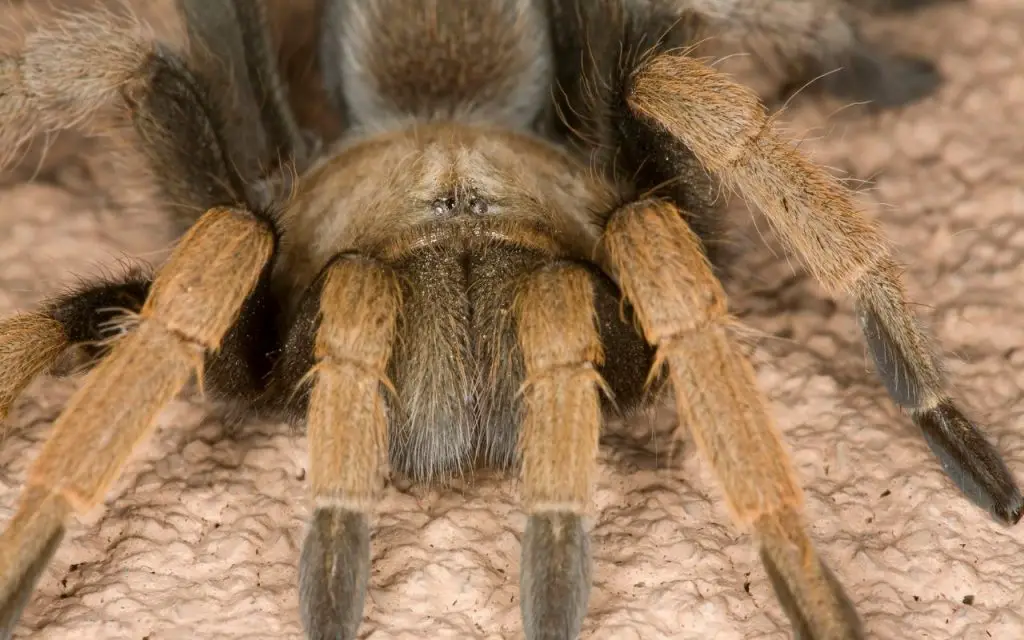
Although these arachnids look scary, they can be slow-moving and docile. In fact, most New World tarantuals such as this one are. Although you very occasionally get a shy or defensive one, many owners swear that they’re perfectly sweet and docile.
The Arizona Blonde tarantulas are generally not large and require a terrarium of 5-10 gallons. Because they’re not very active, they do best in a smaller environment. They prefer 65 to 70 percent humidity. They will be much happier in a smaller terrarium than a large one, which is great news for anyone who wants an easy, low-maintenance pet.
Arizona blonde tarantulas can go for long periods without eating. As a result, you should always keep them clean. Avoid giving them any insect that has been caught in the wild, as they may have pesticides on it. You can also keep them in small deli cups or jars. They are hardy and will live for years in captivity if handled properly.
More on this species in our dedicated care guide.
Antilles Pinktoe
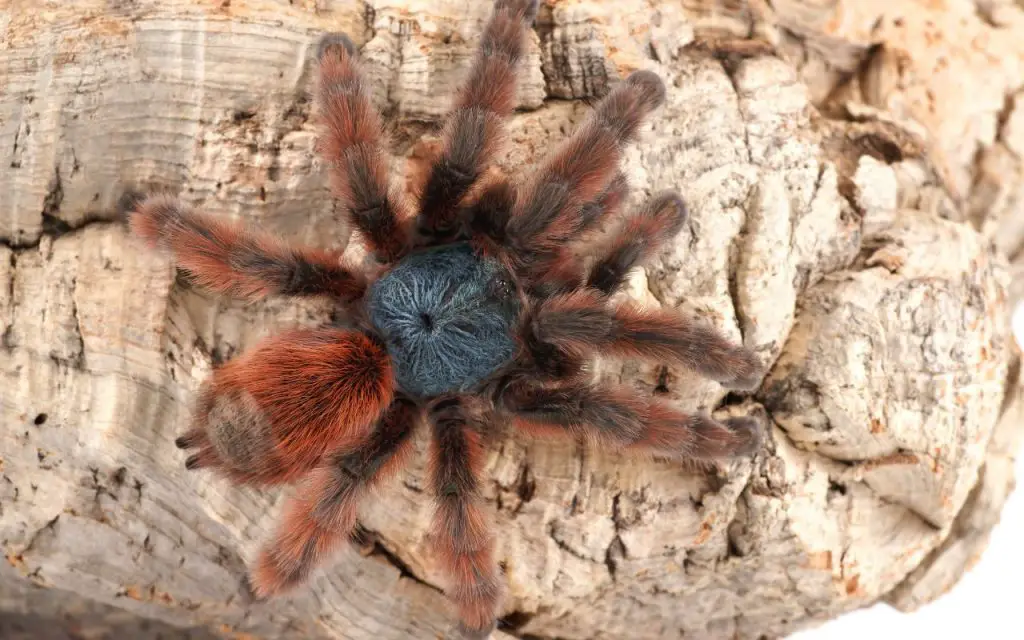
The Antilles Pinktoe Tarantula is a fairly docile species with a mild venom. Its body hairs can cause irritation and redness, but are not harmful. While the Antilles Pinktoe Tarantula is generally not dangerous, it should only be handled by people who have extensive experience handling tarantulas.
The reason this species is on our list is that although it can and does jump and escape when you open its enclosure – it is unagressive. It will not bite, but gives you some good practice dealing with an agile species.
An Antilles Pinktoe Tarantula is a relatively easy species to breed. Females can accept more than one male during breeding season. Make sure that females are not overweight or have recently shed their skin. If they are ready, introduce them to each other and wait for a few weeks. The female will then lay her eggs and a few weeks later, spiderlings will emerge.
Antilles Pinktoe Tarantula prices vary, but generally, they are pretty reasonable and regularly available. Females live about three times longer than males. Males are also smaller in the abdomen than females. They are also more colorful than females. If you plan to buy an Antilles Pinktoe Tarantula, make sure to ask about the costs at the breeder.
Pink Zebra Beauty
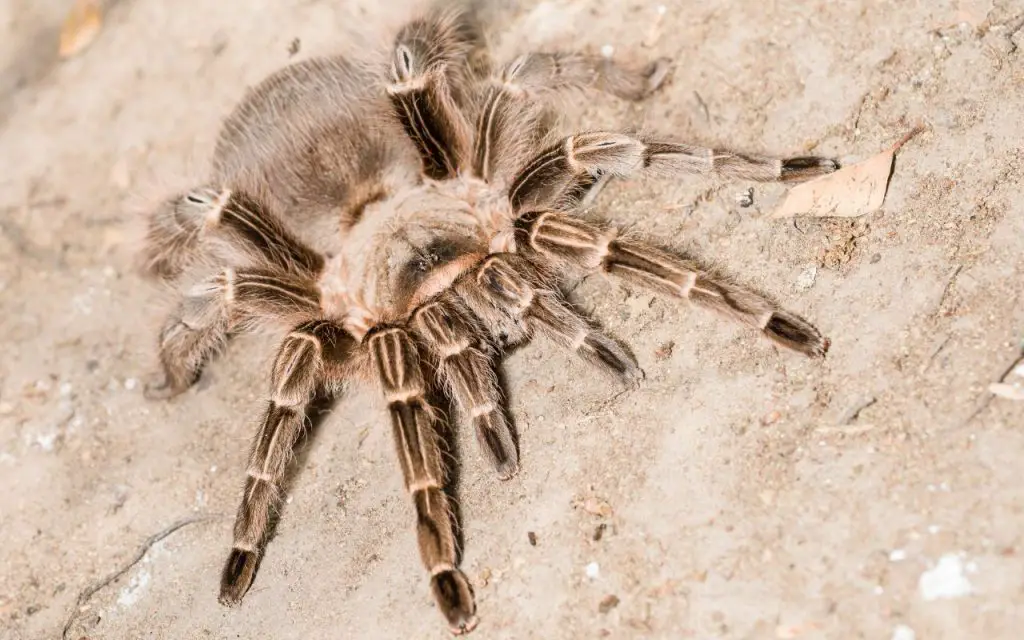
The Pink Zebra Beauty Tarantula is a non-arboreal, ground-dwelling species native to Argentina, Brazil, and Paraguay. This tarantula is considered one of the best pet bugs in the world due to its gentle demeanor.
Although this tarantula is easy to handle, it is not recommended to handle it standing up – always sitting down or on the floor. Its delicate exoskeleton is easily broken if handled incorrectly or in a short fall.
Though E. campestratus is one of the easiest to handle species, each spider has its own personality. A friendly, calm species like the Pink Zebra Beauty might be skittish or shy. As with all spiders, no two specimens are alike. Generally speaking, tarantulas are safe for handling, but be aware that they can become aggressive if handled improperly.
Although it does not require special handling, you should check the habitat often for mold and bacteria. If the tarantula’s habitat is becoming too dry, you may need to replace the media. Bright light or noise may also make it stressed.
Texas Brown
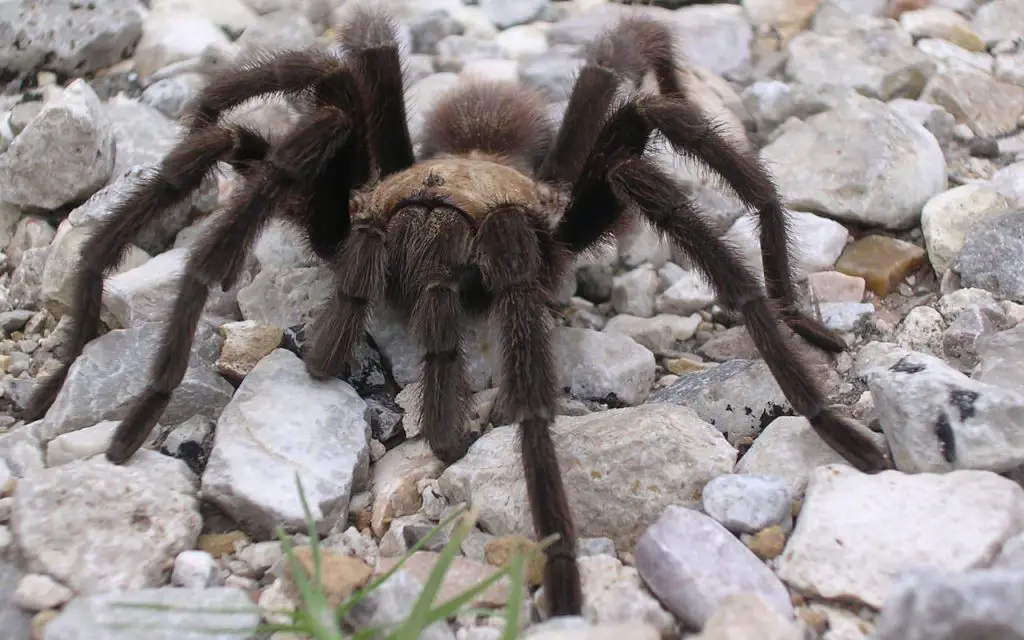
While many tarantulas are not suited for handling (especially Old World species), the Texas Brown is an exception. They usually live in burrows in semi-open areas where they wait for prey to wander by. Sometimes, they venture outdoors to hunt for food.
Most tarantulas live outdoors, and if you’re considering keeping a Texas Brown in a home, you’ll want to select a suitable enclosure that will allow them to burrow. A 5 gallon setup is plenty large for this species, and they’ll spend most of the day hidden but wander out at night.
When it comes to handling a Texas Brown tarantula, be prepared to watch for signs of stress. While most tarantulas are docile, if you’re frightened, you could accidentally irritate your eyes and sting your skin with its hairs. When threatened, it will typically run for cover and raise its front legs, increasing its size.


